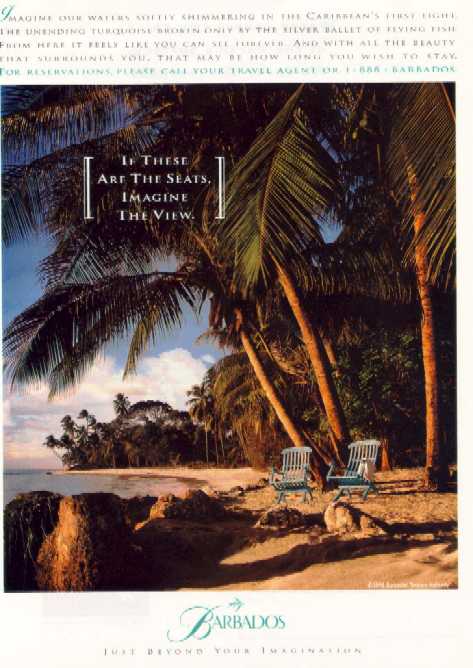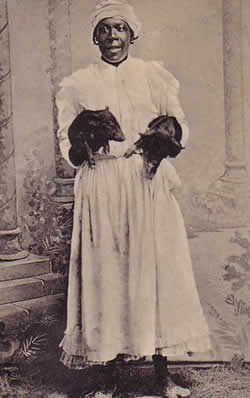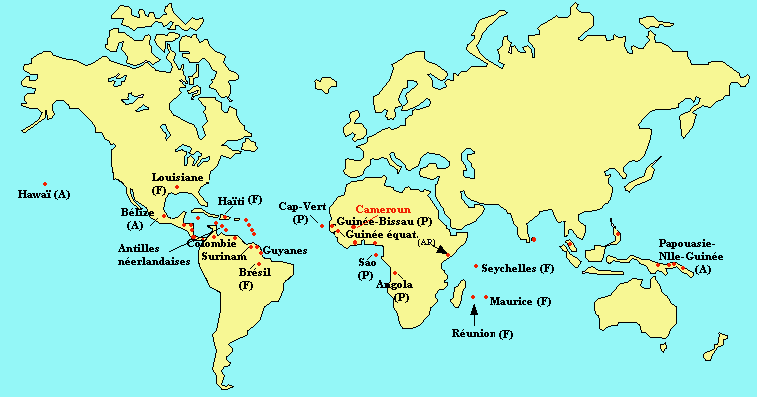
The Greater & Lesser Antilles multilingual heritage.
| Two contrasting views of Barbados: | |
 |
 |
An image of paradise
![]()
A pig seller in Barbados
 Barbados was the center of the African Slave Trade's dispersal
site for the West Indies and American plantations.
Barbados was the center of the African Slave Trade's dispersal
site for the West Indies and American plantations.
This woman is a descendant of not any one, but a mixture of African peoples since it was the character of the Anglo-American slave system to deliberately separate people with similar ethnicity and language on to different plantations. Thus an Ibo, Yoruban, Senegambian or Angolan person was not sold to plantations with similar cultures or where ethnic groups were clustered. Instead slaves were broken in Barbados --actually called "seasoning"-- and then deliberately distributed around the British colonies.
Thus there developed a distinctive slave culture and language (patois) that emerged on the plantations based on African and not Anglo Heritage.
First the Anglo American legal definition of slaves was based on the Barbados Slave Code. The Barbadan slave codes forbid African's to be baptized, to be married, to be educated to read and write, to bear arms, to congregate in groups, or to sound alarms.
Secondly the African customs that solidified slave culture were derivative of African and not Creole cultures. That is in the naming of slave children after Aunts and Uncles, in the respect for children inside or outside of a marriage, or in the prohibition on cousin marriages, the African customs survived the Middle Passage, the breaking-down process in Barbados, and the breakup of slave families due to the sale of slaves throughout the Americas.

Creole languages identified around the world
Map of the Antilles | Two Views of Paradise | Slave codes | Slave culture | Labor Unrest